Field Cricket Vs. two-spotted cricket
First reports for the Two-Spotted Cricket in the North East of Italy date back to 2003 (see PDF file below).
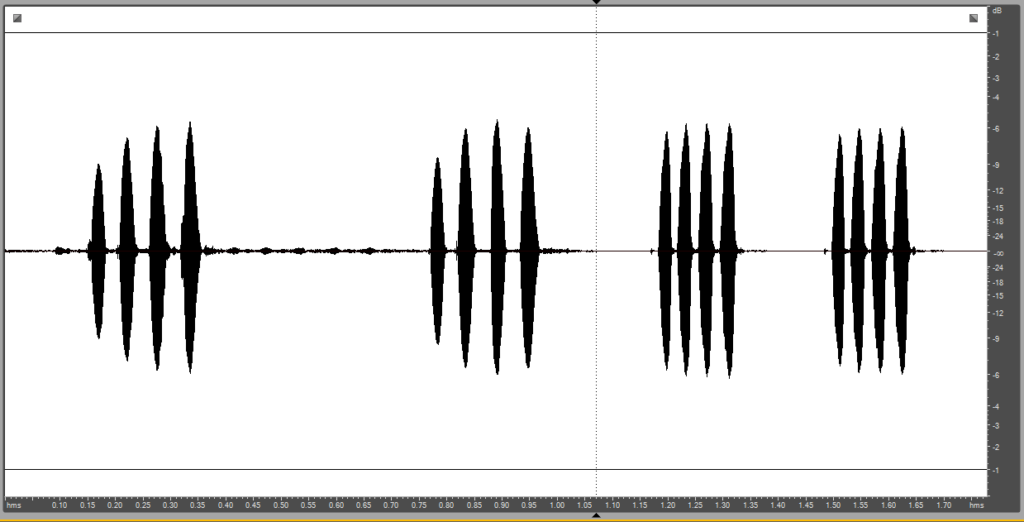
The first two groups of singing notes refer to Field Cricket, the last two groups refer to Two-Spotted Cricket.
As you can see, in the first part of the waveform, relating to Field Cricket, the initial notes are less wide than the following ones, while in Two-Spotted Cricket they are all more or less of the same amplitude.
Also, Two-Spotted Cricket singing is faster than Field Cricket; this partly reflects reality, as, although depending on temperature and environmental conditions, Two-Spotted generally sings faster than Field Cricket.
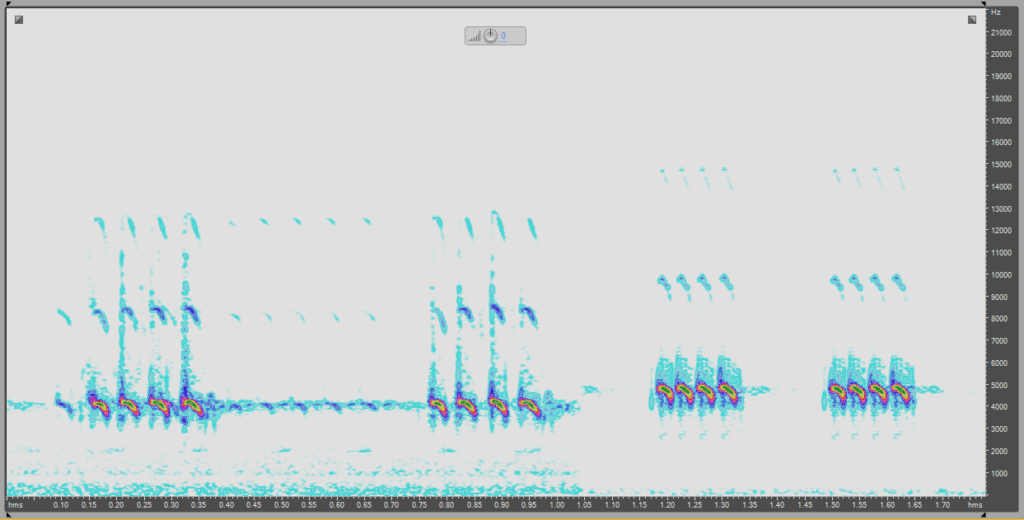
The maximum frequency in Two-Spotted Cricket is approximately 600 Hz higher than in Field Cricket (see the above spectrogram).
_________________________________________________________________________________________________________
And now a curiosity: on May 21, 2009, in the mountains of Verona (Monte Baldo), I recorded the song of a Barred Warbler (shown below); in the final part of the song we can see and hear the imitation of a cricket song (Field or Two-Spotted Cricket?), the three final notes, clearly audible in the audio file and clearly visible both in the waveform and in the spectrogram.
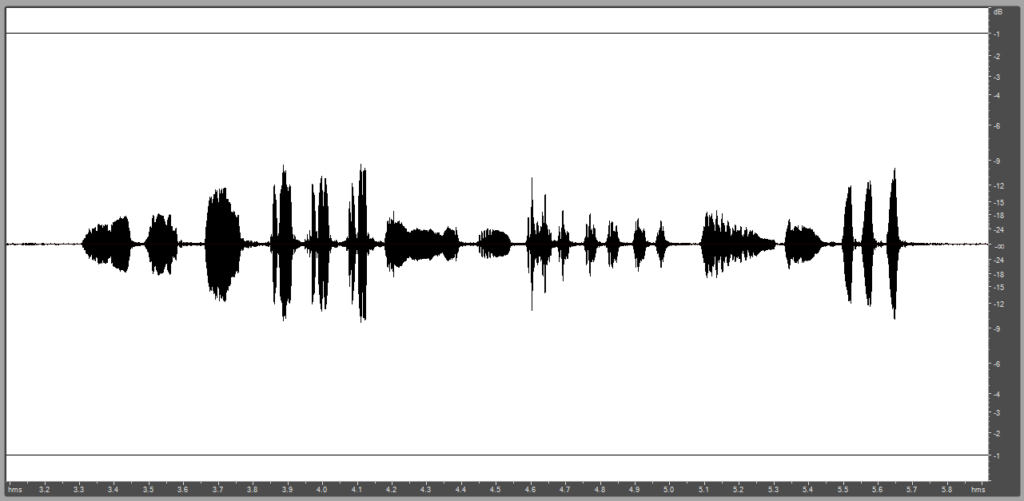
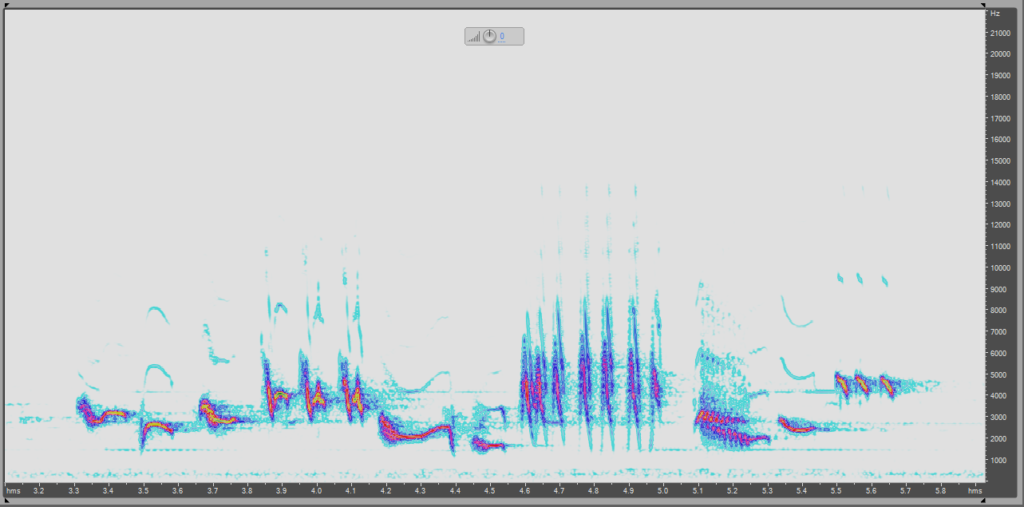
If we look for the imitated specie, we could first of all think to a Field Cricket, since this cricket is abundant in the environment where the Barred Warbler was singing; however, since the imitative learning period usually occurs in the first months of life, it is not unlikely that it could be the imitation of Two-Spotted Cricket, since the latter is widespread in the African wintering quarters of Barred Warbler.
This is not a scientific dissertation, but only an extemporaneous thought!
The use of a Twin Mono Microphone in a parabolic disc
WARNING to the volume of audio listening because of the high signal distortion on the left CARDIOID channel!
Great Telinga!
A few years ago, on a rainy morning, I devoted myself to storage some
recordings made in 2009 with Edirol R9 and Telinga Twin Science Mic inside a
Telinga dish. I was listening to a recording of Crested Tit when I visually
noticed on the PC screen that one channel was partially saturated, unlike the
second channel where the recording was perfect.
As often happens, using the Twin Science Mic I can save at least one of the two
channels.
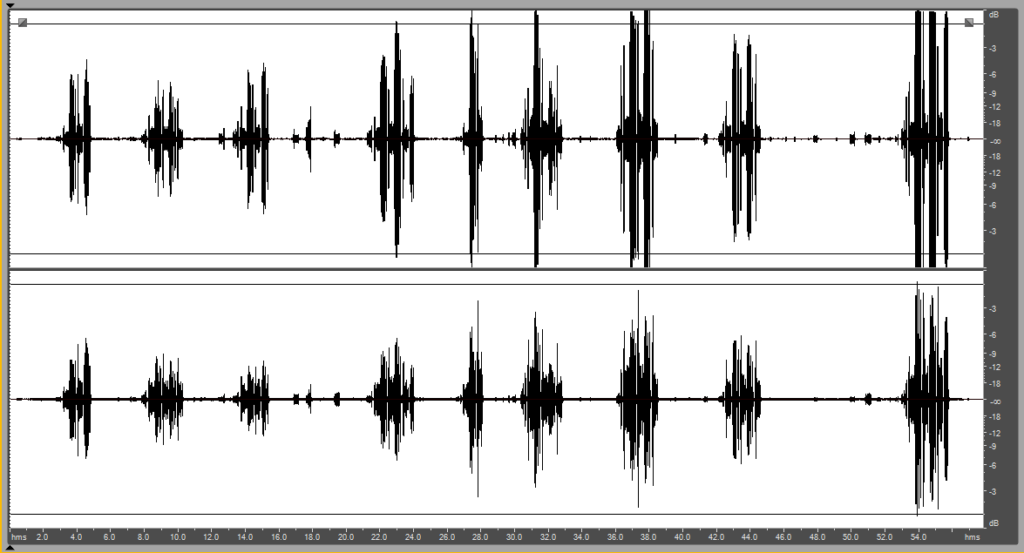
The frequencies emitted by the analyzed call of Crested Tit (2,2-6,4 KHz), for
the right OMNI directional channel (below in the picture above) appear to be characterized by at least 4-6 db lower than the left channel where there is a CARDIOID capsule.
The intrinsic mic noise of the two types of capsule seems to be approximately
similar, while the background noise is obviously different with the road traffic
noise in the distance more pronounced in the right OMNI channel.
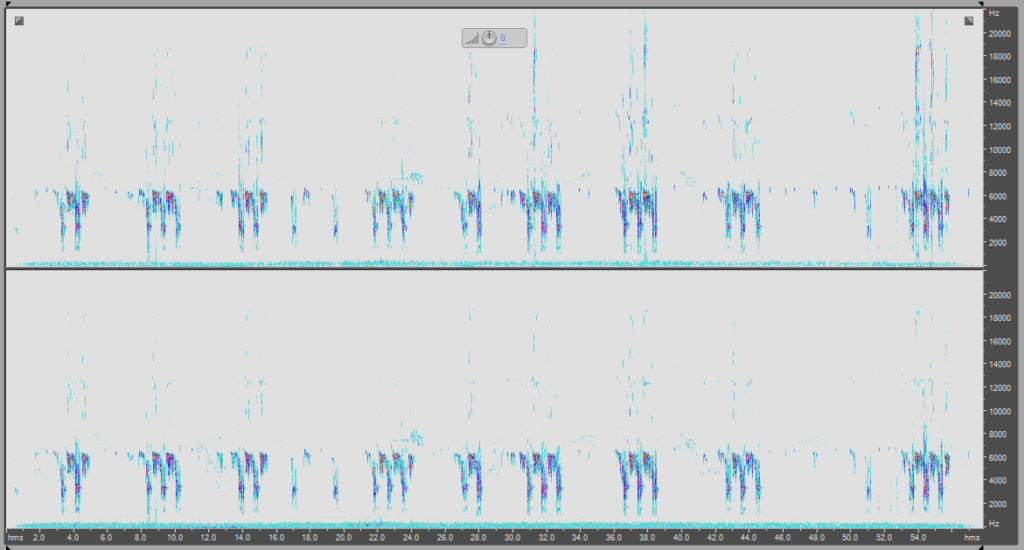
In practice, using a Telinga microphone system Twin Science Mic, it’s like to
have two completely independent systems together in the same apparatus,
something we now take for granted because it existed for many years, but I would
call a stroke of genius that Klas Göran Strandberg, Telinga Owner, had at the time!
Video and Audio Recordings
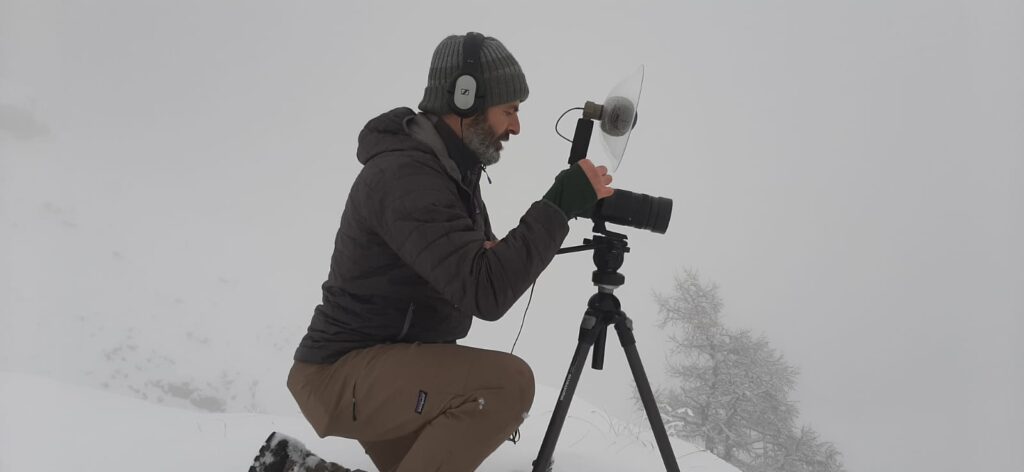
Here the well-known naturalist videomaker Marco Omodei Salé at work. He mainly works in the Dolomite environment, but does not disdain filming species of the plain, where he spends most of his days.
At the link below we can see some wonderful videos he made in recent years
https://vimeo.com/user50958351
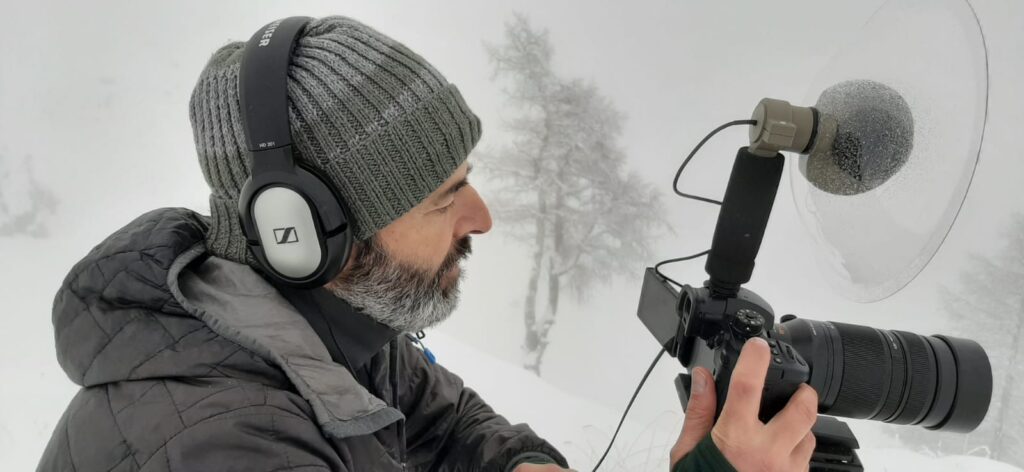
Here he is tuning the settings of one of his many cameras, in this case a Panasonic GH5s combined with the Naturesound 24 cm diameter mini stereo parabolic microphone.
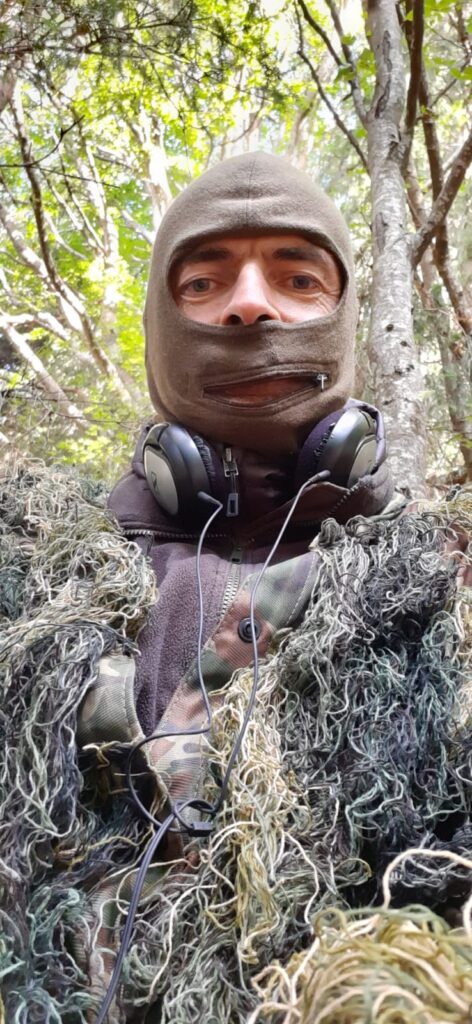
Here we see Marco camouflaged, ready for action!
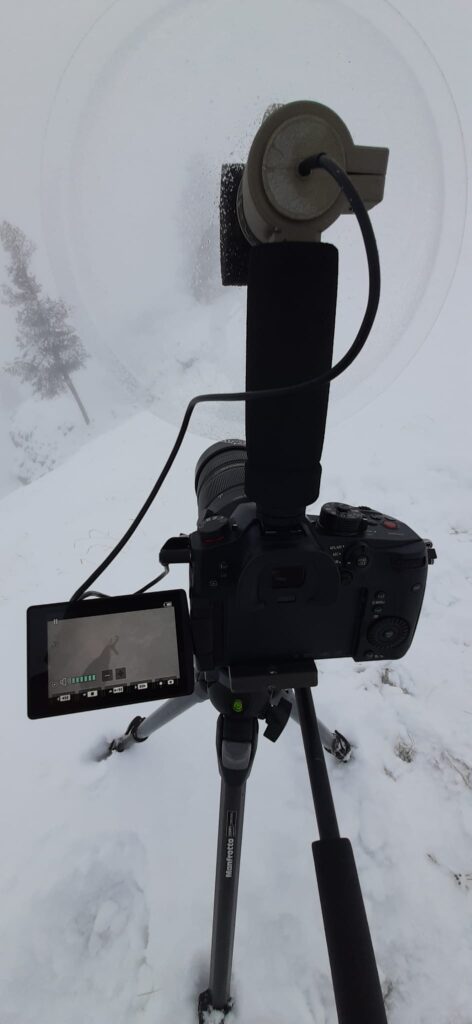
Here is a splendid chamois, visible in the video camera display
similar songs but completely different animals
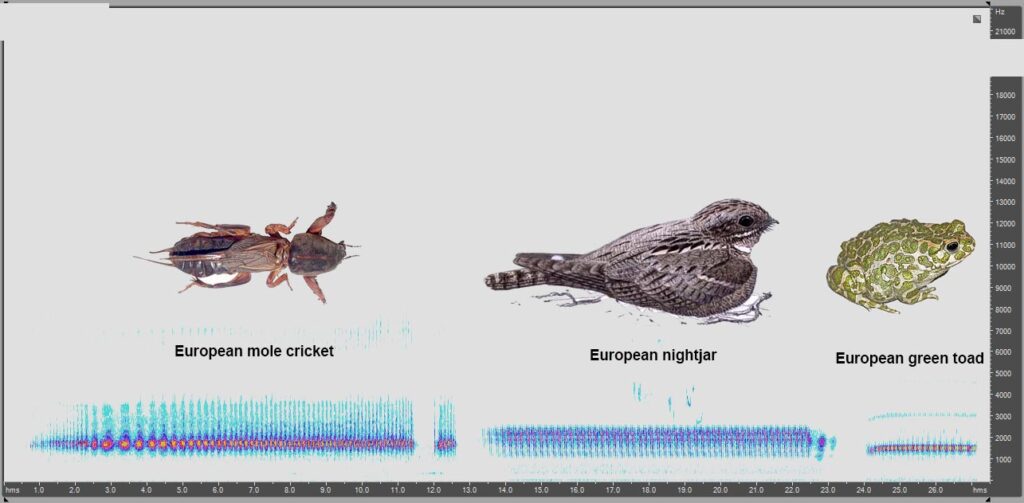
The use of a Stereo Microphone in a 33 cm parabolic dish
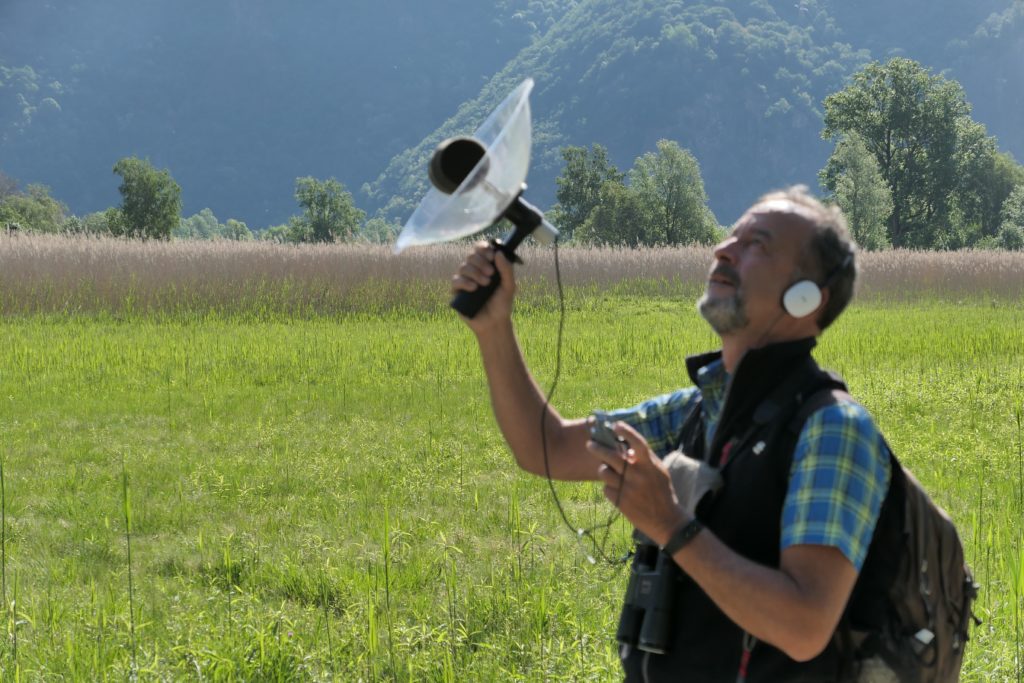
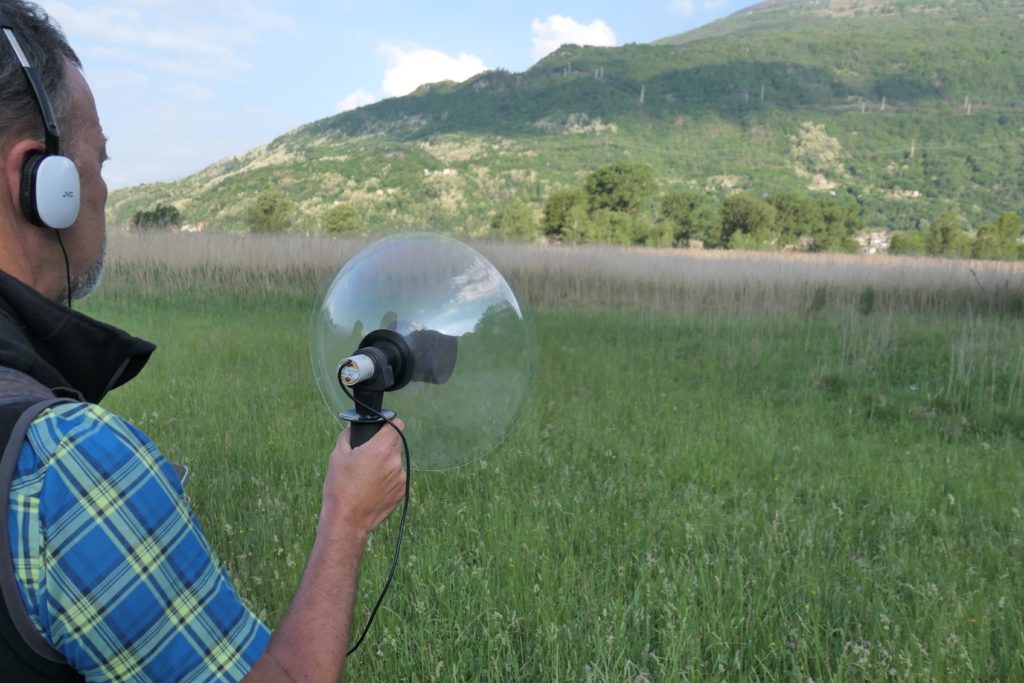
To achieve a recording of a subject in its soundscape context (which represents the acoustic photograph of the environment we are investigating), we need to use a stereo recording, better if a wide focused parabolic stereo microphone system.
By adopting the stereo configuration with the capsules positioned in a “non-traditional way”, quite outside of the focal point of the parabolic dish, Guido Pinoli and Gianni Pavan were able to obtain (at Pian di Spagna Como-Sondrio – I) an enlargement of the background sound scene, approaching the perfect stereophonic effect that is difficult to achieve when using a traditional parabolic microphone.
_________________________________
Here an excellent soundscape recorded on 2020-May-21 by Guido Pinoli at “Capanne di Marcarolo” nature park (Genoa) – I – Parabolic stereo Microphone, 33 cm Dish.
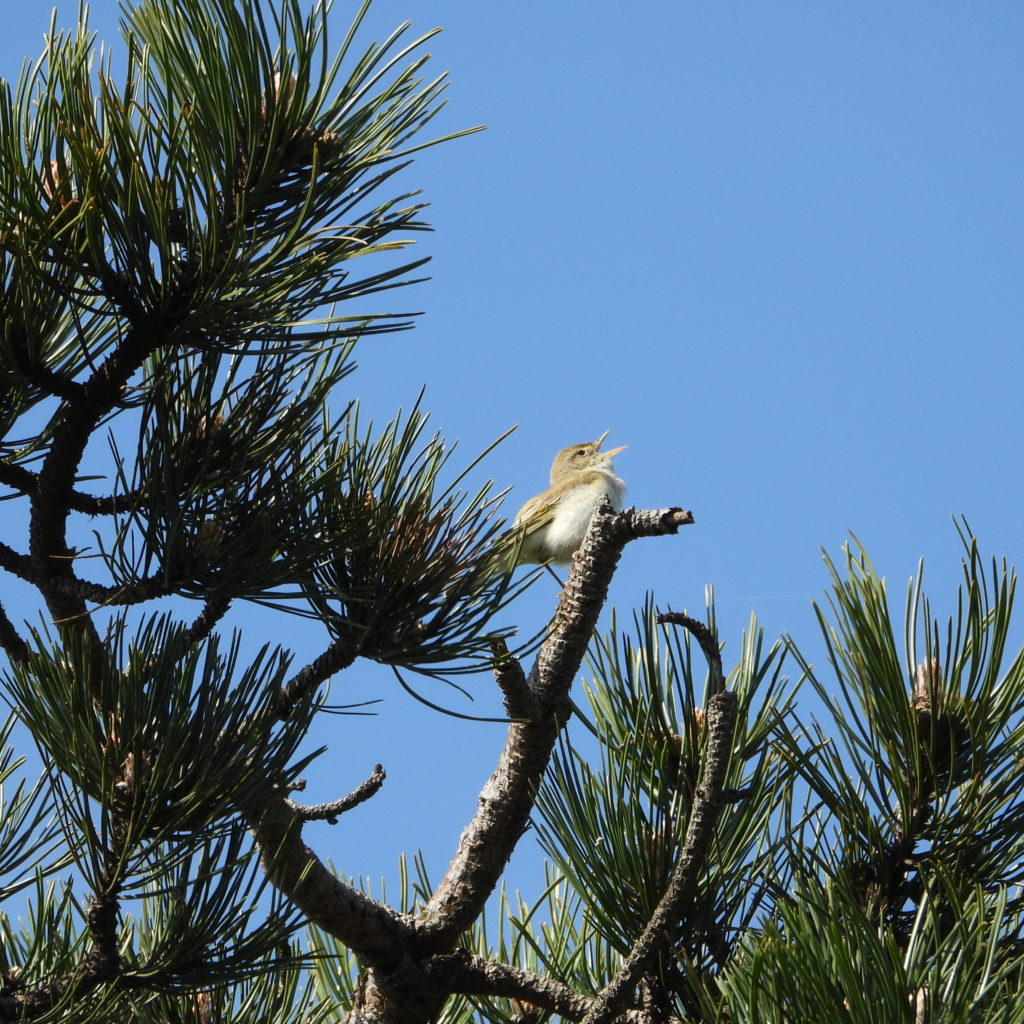
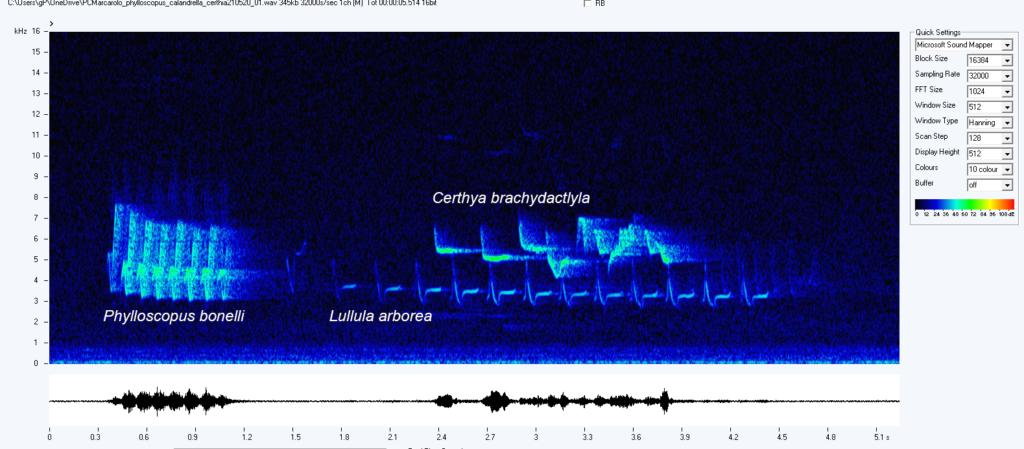
To underline that for Certhya brachydactyla and Lullula arborea there is no overlap in frequency and the two songs stand out visually and are perfectly separable.
Recording by Guido Pinoli
Spectrogram created using SeaPro by Gianni Pavan / CIBRA / Università di Pavia – http://www.unipv.it/cibra/seapro.html
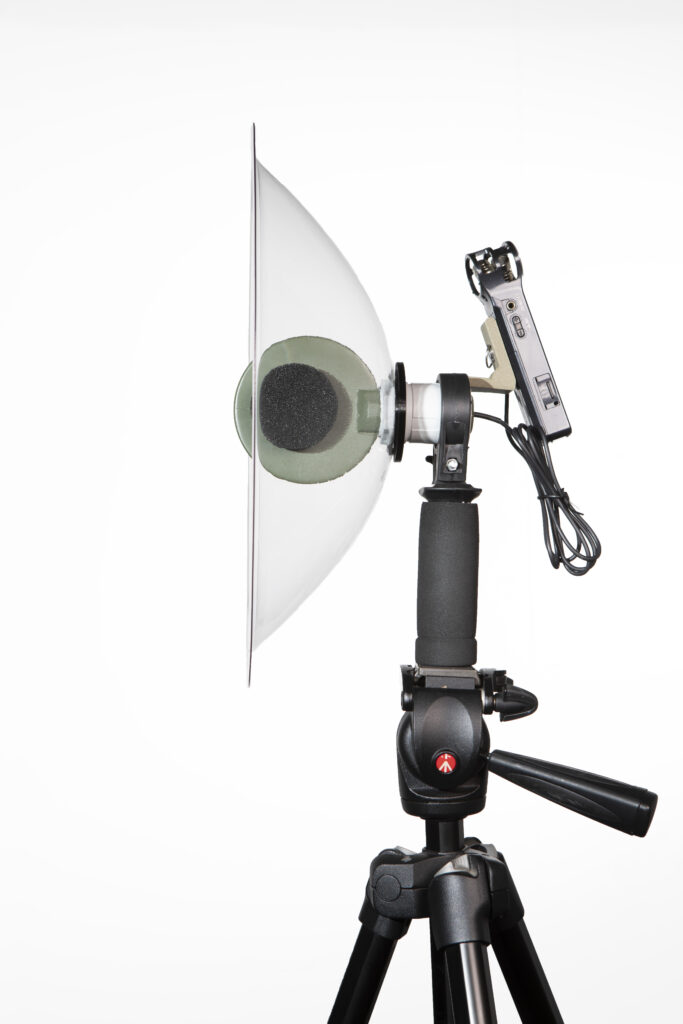
_______________________________________________
Here are two very short examples of video recording with audio coming from the same 33 cm parabolic dish, same Primo EM172 microphones, but powered by the video camera through Phantom 48V.
Cervus elaphus rutting
Buteo buteo singing in the snow
Thanks to the courtesy of Marco Omodei Salé
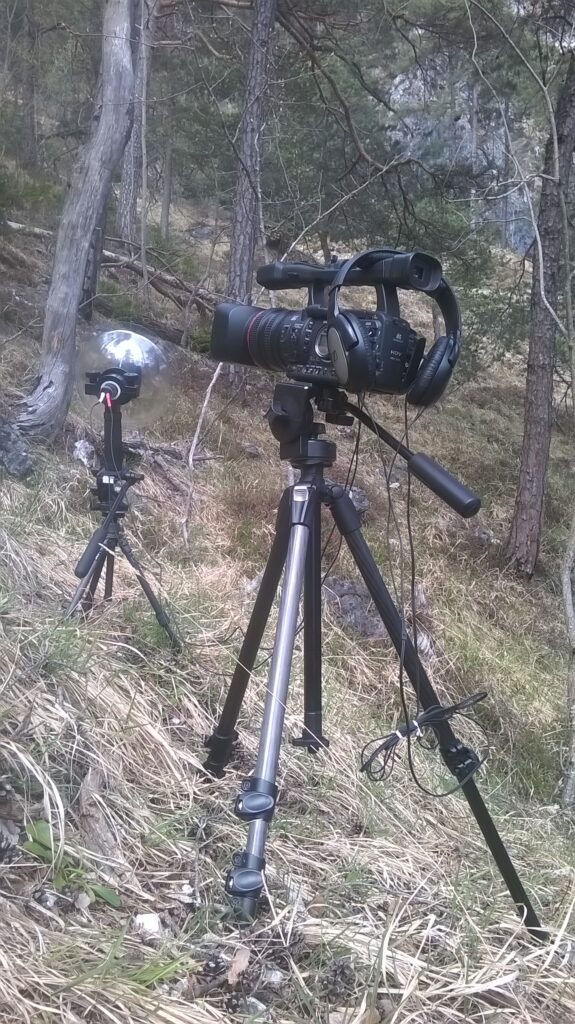
Canon XHA1 and 33 cm Stereo Parabolic Microphones System

Marco Omodei Salé, the author of the two videos above; the wildlife filmaker is perfectly camouflaged ready for a naturalistic video shooting session
See also https://www.naturesound.it/2020/12/04/video-and-audio-recordings/
Hoverfly Episyrphus balteatus “warm-up”!
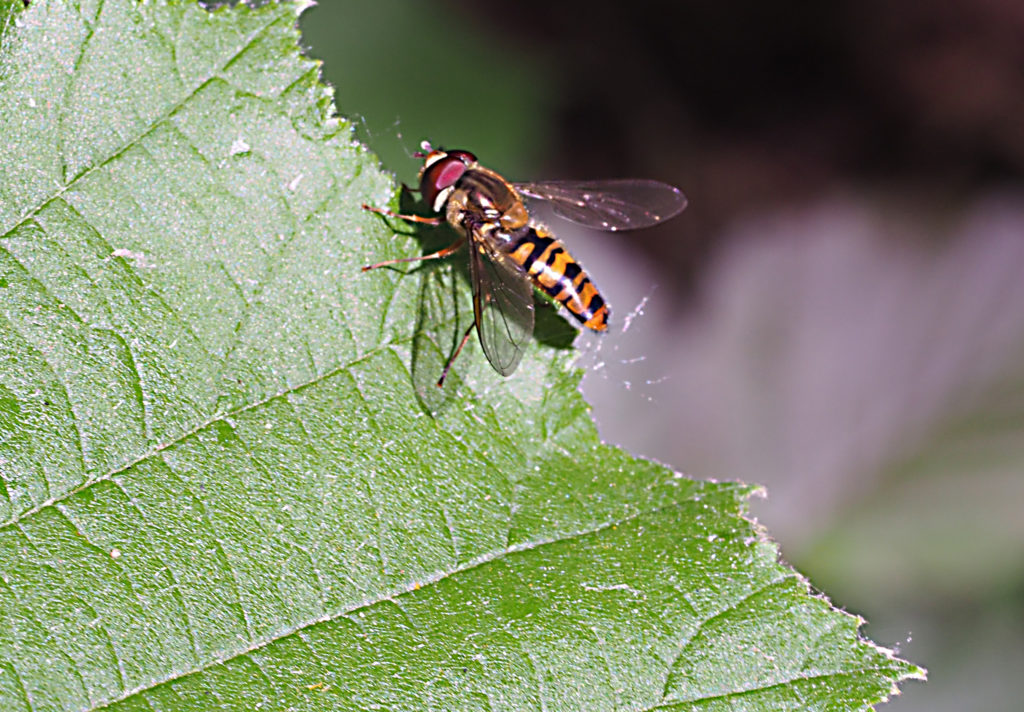
Last morning I was looking for some call or song of migratory birds that in this season migrate through our latitudes, when I was attracted, in audio headphones, by the buzz of an insect, a particularly “annoying” buzz. I directed my Sennheiser ME66 half shotgun directional microphone towards the sound source, by means of hearing, without first seeing what and what the subject was. Once the sound was focused, I noticed that it was emitted by a Hoverfly sp. laid on an Elderberry leaf.
That seemed unusual to me in that I had never noticed this behavior by the hoverflies, but I must say the truth that it is not a group of insects to which I have ever paid particular attention.
At first I thought of something inherent to a territorial / reproductive behavior.
I took some photos, made some short videos, but above all I made some audio recordings. Talking to my friend Cesare Brizio, particularly well versed in some groups of insects, he suggested a possible explanation for this phenomenon, assuming a sort of warming up before flying away in displacement and courtship.
Formulated this hypothesis, in the next days I devoted myself to a more accurate observation. Actually I was able to notice that, after having made some short flights, some subjects landed on the leaves exposed to the sun, almost imperceptibly vibrating the wings but at a considerable “speed”, at the same time emitting a particularly high hum in frequency with respect to the frequency in Hertz at which we are used to hearing the normal buzz of flight. This hum then tended to increase more and more in frequency until it reached a point where the subject suddenly took off, instantly changing the buzzing to the classic flight buzzing.
So, may be a behavior to be defined as described as a sort of warm up, or may it have to do with a territorial / reproductive behavior? In the absence of any bibliographical information, I will continue my observations, if only to satisfy my curiosity!
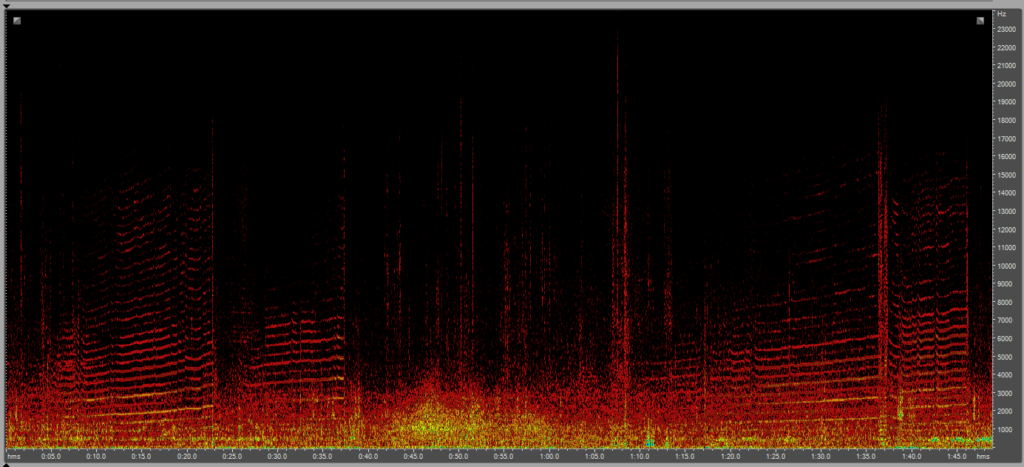
Ortolan Bunting
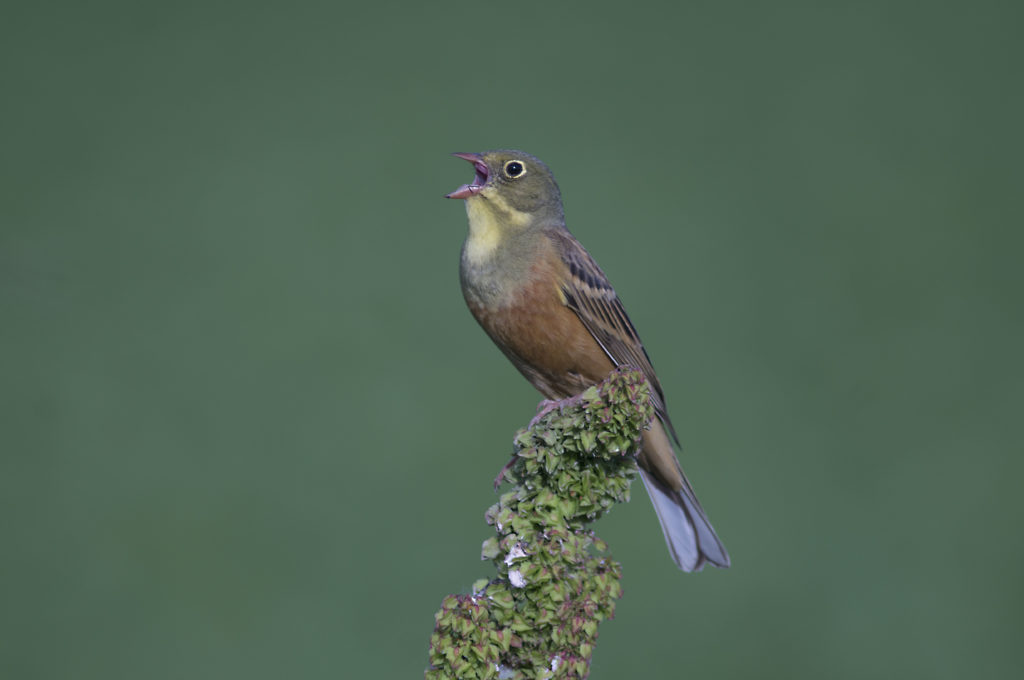
Ortolan bunting song.
Recorded using a mid MONO parabolic microphone – 2 x Primo EM172 caps and a 33 cm dish.
Filmed with a Sony Nex6 + adapter and a Lens Nikon 400/5,6 IF-ED.
Special thanks to Gastone Pivatelli.
Marsh Warbler Song
Nightingales Duet song in a marshy environment
TETA – DIY Stereo Microphone – AOM 5024L capsules

Nightingales Duet song in a marshy environment
Bufotes VIRIDIS
European green toad – Bufotes viridis – Rospo smeraldino
Recorded using a Telinga PIP parabolic microphone (Plug In Power, with direct power supplied by the Zoom H1 digital audio recorder).
Registrazione effettuata mediante l’utilizzo di un microfono parabolico Telinga PIP (Plug In Power, con alimentazione diretta fornita dal registratore audio digitale Zoom H1).

Commenti recenti